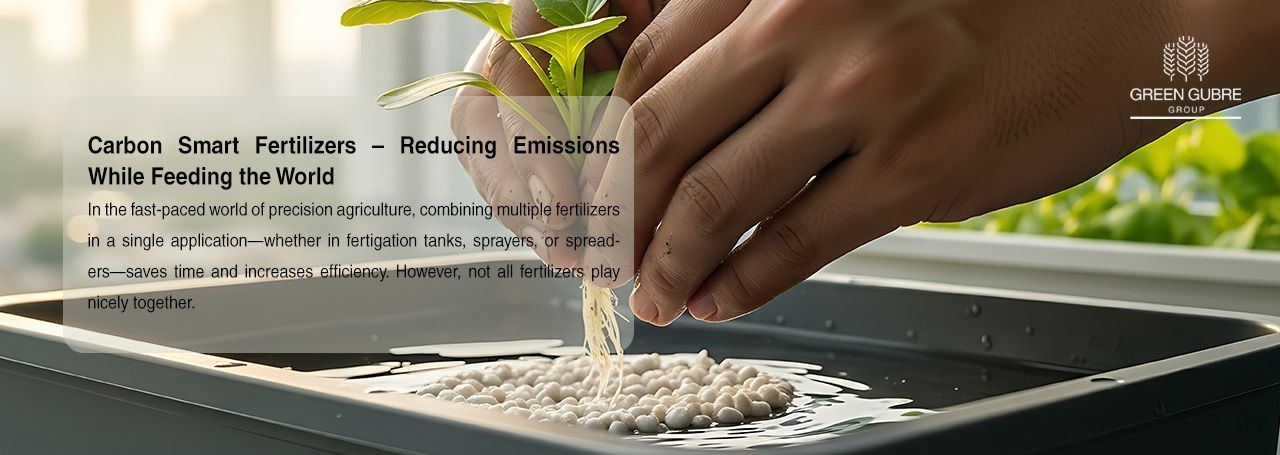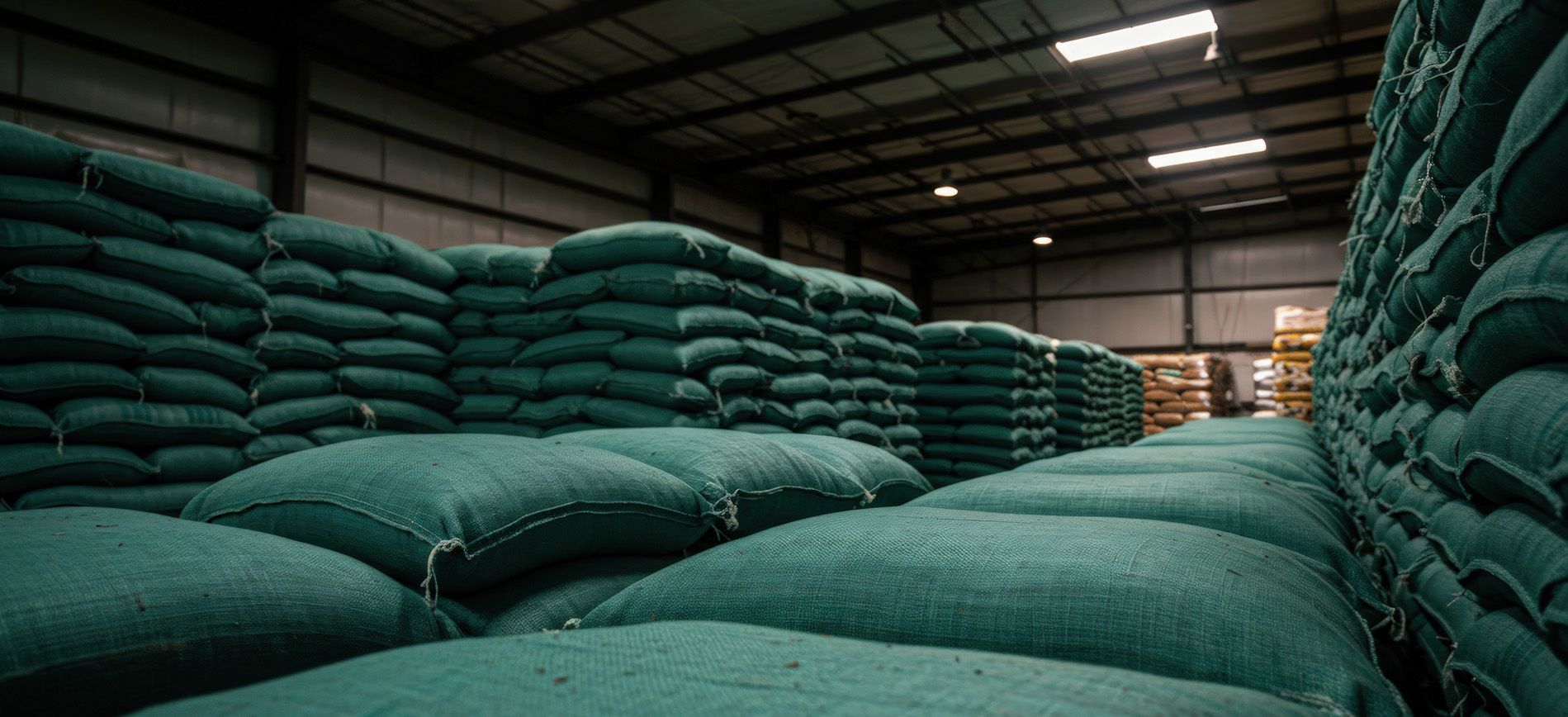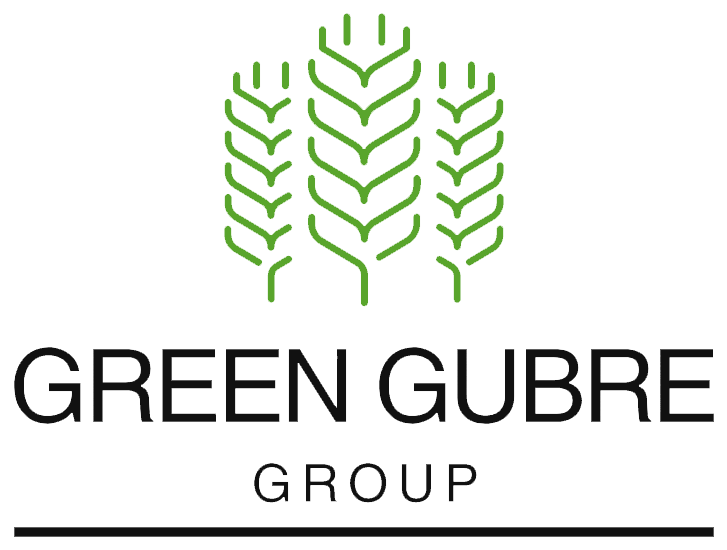Fertilizer Compatibility – Preventing Nutrient Loss and Field Failures
Fertilizer Compatibility – Preventing Nutrient Loss and Field Failures

Introduction: Why Fertilizer Compatibility Matters
In the fast-paced world of precision agriculture, combining multiple fertilizers in a single application—whether in fertigation tanks, sprayers, or spreaders—saves time and increases efficiency. However, not all fertilizers play nicely together. When incompatible products are mixed, they can precipitate, volatilize, or even damage crops, leading to nutrient loss, clogged lines, and failed applications.
Understanding fertilizer compatibility is essential for protecting crop health, maximizing nutrient availability, and ensuring application success.
What Is Fertilizer Compatibility?
Fertilizer compatibility refers to the ability of two or more fertilizers to be safely mixed or applied together without adverse chemical reactions. These reactions can include:
- Precipitation (formation of insoluble solids)
- pH shifts that render nutrients unavailable
- Volatilization losses of ammonia
- Toxicity to plants from excess salts or reactive combinations
Compatibility issues may arise in fertigation systems, foliar sprays, tank mixes, or granular blends.
Source: ScienceDirect – Nutrient Interactions in Agriculture
Common Incompatibility Issues
| Incompatible Mix | Problem |
|---|---|
| Calcium nitrate + phosphate | Forms calcium phosphate precipitate |
| Urea + ammonium nitrate | Risk of volatilization and salt toxicity |
| Sulfates + calcium-containing products | Forms insoluble calcium sulfate (gypsum) |
| Micronutrients (Fe, Zn) + high-pH mixes | Nutrients become insoluble at high pH |
| Acidic & alkaline solutions | May neutralize each other or form sludges |
Even visually apparent mixtures can be chemically unstable—always test and verify before complete application.
Source: Fertilizer Focus Magazine
Best Practices for Safe Mixing
- Follow a Compatibility Chart: Use established nutrient compatibility tables or digital apps to check if your products can be combined.
- Conduct a Jar Test:
Mix small quantities of each fertilizer in a clear jar to observe for cloudiness, heat, separation, or precipitate.
- Adjust pH: Some reactions occur only at certain pH levels. Buffering the solution can prevent precipitation or nutrient lockout.
- Sequence Mixing Order:
Always add water first. Dissolve major fertilizers before adding micronutrients or biostimulants.
- Use Separate Tanks When Needed:
In fertigation, using separate injection lines can prevent incompatible products from reacting prematurely.
Compatibility Tips by Application Method
- Fertigation: Regularly filter lines and avoid combining phosphates with calcium or magnesium.
- Foliar Sprays: Avoid high-salt formulations. Chelated micronutrients are safer and more stable.
- Granular Blending: Match granule size, density, and hygroscopic properties to ensure even spreading.
- Hydroponics: Always use separate nutrient stock tanks (A and B) for calcium and sulfates or phosphates.
Innovative Tools for Compatibility Checks
Modern agriculture platforms now offer digital tools for farmers and agronomists to validate mixes:
- Fertilizer compatibility apps
- Online calculators
- Fertigation modeling software
- Sensor-equipped bright tanks to monitor pH, salinity, and nutrient ratios
These tools reduce guesswork and improve application accuracy.
Source: Journal of Plant Nutrition
Green Gubre Group’s Fertilizer Compatibility Support
At Green Gubre Group, we prioritize safe, practical nutrient application. Our services include:
- Compatibility testing for custom mixes
- Ready-to-use liquid blends with pre-validated formulas
- pH-buffered fertilizers for foliar and fertigation systems
- Granule-matching services for physical blend optimization
- On-demand guidance via our agronomy team and compatibility charts
We aim to protect your investment and support your yield potential—safely and efficiently.
Conclusion: Mix Smart, Farm Smarter
Fertilizer compatibility isn’t just a technical detail—it’s a crucial part of nutrient efficiency, equipment protection, and crop safety. Taking time to verify compatibility avoids costly mistakes and helps farmers achieve higher, more sustainable yields.
Before mixing your next tank or blend, ask: “Are these fertilizers compatible?” A few minutes of testing can save a season’s worth of trouble.




